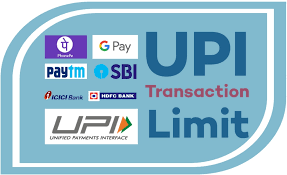
What was the requirement for limits on UPI transactions?
As transactions facilitated by the UPI breach record highs, banks have opted for daily limits.
What was the requirement for limits on UPI transactions?
• The story so far:
As transactions facilitated by the UPI breach record highs, banks have opted for daily limits. These are over and above the already imposed ceilings mandates by the NPCI.
• What is the conversation about daily limits?
At present, users can make up to 20 transactions or ₹1 lakh in a single day– either all at once or through the day. For certain specific categories such as capital markets, collections and insurance, the limit is ₹2 lakh.
The conversation now revolves around banks and apps coming up with their own guidelines for transactions.
As the payments interface looks to expand its footprint and its growing utility in daily lives, limits would help maintain an essential security infrastructure and its seamless functioning.
• What are the trends with respect to UPI?
In payments, there is a segregation of P2P (peer-to-peer) and P2M (peer-to-merchant). In P2P category, the majority of transactions were in the below ₹500 bracket and were lower as compared to share of P2M in the same amount. Further, in the previous fiscal, the number of reported UPI frauds also increased.
Thus, along with the growing popularity of UPI and its varied nature in terms of use, there is an imperative need to safeguard the system and sustain its smoother functioning.
• UPI- It is an advanced version of Immediate Payment Service (IMPS)- round–the-clock funds transfer service to make cashless payments faster, easier and smoother.
NPCI launched UPI with 21 member banks in 2016. It is currently the biggest among the NPCI operated payments systems.
•National Payments Corporation of India (NPCI)- It is an umbrella organisation for operating retail payments and settlement systems in India.
It was an initiative of Reserve Bank of India (RBI) and Indian Banks’ Association (IBA) under the provisions of the Payment and Settlement Systems Act, 2007.
